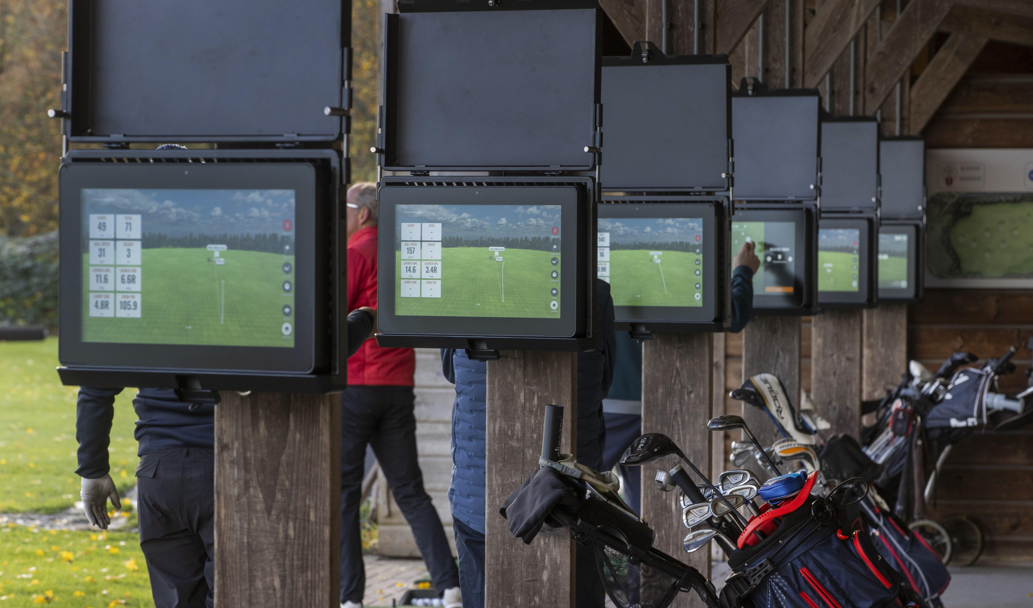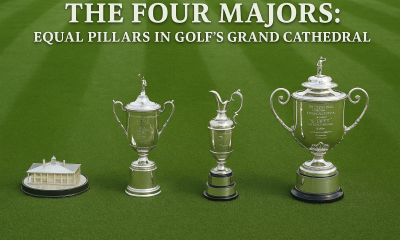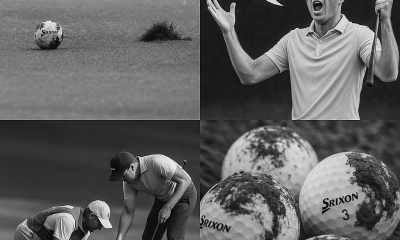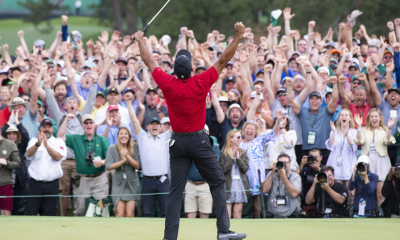Opinion & Analysis
My Take: The good, the bad, and the ugly of technology in golf and life

As I approach my 50th birthday in just about two months, I find myself reflecting more frequently on how much has changed since growing up in Central New York. The world today is remarkably different. Technological advancements have transformed life in countless ways—from everyday activities like meals, shopping, and entertainment to business, manufacturing, and education. Anything imaginable can now be delivered right to your door. You no longer need to visit a movie theater for blockbusters or browse your local video rental store in the grocery store basement to find something interesting to watch at home. Calling friends or family happens from anywhere, without being tethered to a cord attached to the wall phone. And those phones we all carry now are far more than communication devices; for younger generations, the “phone” is everything except something to actually call someone on. Education and business increasingly rely on artificial intelligence—a trend many fear will only accelerate.

Golf team, my Junior Year, fall 1991. A much simpler time.
One of the best things about growing up in the ’80s and ’90s was genuine human connection. If someone disagreed with you, they had to express it directly to your face—no keyboard warriors to worry about back then, no comments section where people could bash someone without knowing them or fully hearing their perspective. Respect for others and their opinions was far more the norm.
As a preteen and teenager in the ’80s and ’90s, I became a golf fanatic. I played whenever possible, even finding ways to play during winter. I vividly remember splicing open golf whiffle balls, stuffing them with newspaper pieces, and taping them back up along the seams so they would stay atop the snow as we played a makeshift backyard course in boots and gloves. I was addicted and knew as early as middle school that I wanted to work in the golf business.

During those years, golf was simply about a set of clubs, balls, tees, the course, and your local PGA Professional. Driving ranges often had you retrieving your own golf balls, and concepts like a TopTracer Range setup seemed like science fiction from “The Jetsons.” Golf instruction happened between a student and a PGA Pro, in-person and without training aids, video capture, slow-motion swing analysis systems, or various apps. If you even said “apps,” people would think you meant appetizers like nachos or cheese fries. Those were the good old days—when persimmon woods still filled golf bags and equipment advancements came maybe once a year, not seemingly weekly as they do today.
A golf “celebrity” was a PGA or LPGA Tour star, not someone performing trick shots or filming themselves with buddies playing a nine-hole scramble. Doing that would have been pointless because there wasn’t yet a platform to showcase your videos to the masses. Instruction beyond lessons with the pro came from books or magazines and occasionally videos like Jack Nicklaus’s “Golf My Way,” Wally Armstrong’s “Gator Golf.” or “Bob Mann’s Automatic Golf.” Of course, these were all enjoyed on VHS or DVD…remember those?
Having worked in the game for nearly 30 years, I sincerely appreciate what once was. Simultaneously, I’ve fully embraced all the advancements in the game. As a coach, I’ve witnessed how technology helps guide my students toward their goals and how improvements in equipment, practice facilities, home simulators, and more have made golf more accessible. I appreciate golf YouTubers and influencers. I value forums like GolfWRX. I embrace social media that allows people to share their love of the game, celebrate triumphs, process tournament heartbreaks, and offer advice they believe might help others.

What I miss most about the past—and dislike most about our modern world—is the genuine human interaction and respect for others that once prevailed, not just in golf but in life generally. I intentionally work with fewer students in my coaching practice to provide that personal connection that seems increasingly rare. I love writing and sharing experiences on forums like GolfWRX and other outlets to help fellow golf enthusiasts. It’s disappointing, however, when some feel compelled to criticize others’ perspectives rather than offering thoughtful counterpoints civilly.
It’s often said that golf is a microcosm of life itself—something I still believe. As our world continues advancing at its rapid pace, my hope is that we can learn—or perhaps relearn—how to be more human to one another, both on and off the golf course. Only then will we recapture the ability to live simpler, less stressful lives, all while enjoying the advantages of today’s technology.
Reader, please support me by checking out my three weekly columns on RG.org. On Mondays, I present “The Starter,” which recaps the week gone by in golf. On Thursdays, I give you “Fairway Focus,” which previews the week to come in golf. And on Saturdays, I dish up the “Weekend Fore-cast,” a look at what’s on tap for the upcoming weekend.
Editor’s note: “My Take” will be an ongoing weekly series where Brendon shares his thoughts and opinions on various aspects of the game and industry. These are Brendon’s opinions and do not necessarily reflect those of GolfWRX, its staff, and its affiliates.
Opinion & Analysis
The 2 primary challenges golf equipment companies face

As the editor-in-chief of this website and an observer of the GolfWRX forums and other online golf equipment discourse for over a decade, I’m pretty well attuned to the grunts and grumbles of a significant portion of the golf equipment purchasing spectrum. And before you accuse me of lording above all in some digital ivory tower, I’d like to offer that I worked at golf courses (public and private) for years prior to picking up my pen, so I’m well-versed in the non-degenerate golf equipment consumers out there. I touched (green)grass (retail)!
Complaints about the ills of and related to the OEMs usually follow some version of: Product cycles are too short for real innovation, tour equipment isn’t the same as retail (which is largely not true, by the way), too much is invested in marketing and not enough in R&D, top staffer X hasn’t even put the new driver in play, so it’s obviously not superior to the previous generation, prices are too high, and on and on.
Without digging into the merits of any of these claims, which I believe are mostly red herrings, I’d like to bring into view of our rangefinder what I believe to be the two primary difficulties golf equipment companies face.
One: As Terry Koehler, back when he was the CEO of Ben Hogan, told me at the time of the Ft Worth irons launch, if you can’t regularly hit the golf ball in a coin-sized area in the middle of the face, there’s not a ton that iron technology can do for you. Now, this is less true now with respect to irons than when he said it, and is less and less true by degrees as the clubs get larger (utilities, fairways, hybrids, drivers), but there remains a great deal of golf equipment truth in that statement. Think about it — which is to say, in TL;DR fashion, get lessons from a qualified instructor who will teach you about the fundamentals of repeatable impact and how the golf swing works, not just offer band-aid fixes. If you can’t repeatably deliver the golf club to the golf ball in something resembling the manner it was designed for, how can you expect to be getting the most out of the club — put another way, the maximum value from your investment?
Similarly, game improvement equipment can only improve your game if you game it. In other words, get fit for the clubs you ought to be playing rather than filling the bag with the ones you wish you could hit or used to be able to hit. Of course, don’t do this if you don’t care about performance and just want to hit a forged blade while playing off an 18 handicap. That’s absolutely fine. There were plenty of members in clubs back in the day playing Hogan Apex or Mizuno MP-32 irons who had no business doing so from a ballstriking standpoint, but they enjoyed their look, feel, and complementary qualities to their Gatsby hats and cashmere sweaters. Do what brings you a measure of joy in this maddening game.
Now, the second issue. This is not a plea for non-conforming equipment; rather, it is a statement of fact. USGA/R&A limits on every facet of golf equipment are detrimental to golf equipment manufacturers. Sure, you know this, but do you think about it as it applies to almost every element of equipment? A 500cc driver would be inherently more forgiving than a 460cc, as one with a COR measurement in excess of 0.83. 50-inch shafts. Box grooves. And on and on.
Would fewer regulations be objectively bad for the game? Would this erode its soul? Fortunately, that’s beside the point of this exercise, which is merely to point out the facts. The fact, in this case, is that equipment restrictions and regulations are the slaughterbench of an abundance of innovation in the golf equipment space. Is this for the best? Well, now I’ve asked the question twice and might as well give a partial response, I guess my answer to that would be, “It depends on what type of golf you’re playing and who you’re playing it with.”
For my part, I don’t mind embarrassing myself with vintage blades and persimmons chasing after the quasi-spiritual elevation of a well-struck shot, but that’s just me. Plenty of folks don’t give a damn if their grooves are conforming. Plenty of folks think the folks in Liberty Corner ought to add a prison to the museum for such offences. And those are just a few of the considerations for the amateur game — which doesn’t get inside the gallery ropes of the pro game…
Different strokes in the game of golf, in my humble opinion.
Anyway, I believe equipment company engineers are genuinely trying to build better equipment year over year. The marketing departments are trying to find ways to make this equipment appeal to the broadest segment of the golf market possible. All of this against (1) the backdrop of — at least for now — firm product cycles. And golfers who, with their ~15 average handicap (men), for the most part, are not striping the golf ball like Tiger in his prime and seem to have less and less time year over year to practice and improve. (2) Regulations that massively restrict what they’re able to do…
That’s the landscape as I see it and the real headwinds for golf equipment companies. No doubt, there’s more I haven’t considered, but I think the previous is a better — and better faith — point of departure when formulating any serious commentary on the golf equipment world than some of the more cynical and conspiratorial takes I hear.
Agree? Disagree? Think I’m worthy of an Adam Hadwin-esque security guard tackle? Let me know in the comments.
@golfoncbs The infamous Adam Hadwin tackle ? #golf #fyp #canada #pgatour #adamhadwin ? Ghibli-style nostalgic waltz – MaSssuguMusic
Podcasts
Fore Love of Golf: Introducing a new club concept

Episode #16 brings us Cliff McKinney. Cliff is the founder of Old Charlie Golf Club, a new club, and concept, to be built in the Florida panhandle. The model is quite interesting and aims to make great, private golf more affordable. We hope you enjoy the show!
Opinion & Analysis
On Scottie Scheffler wondering ‘What’s the point of winning?’

Last week, I came across a reel from BBC Sport on Instagram featuring Scottie Scheffler speaking to the media ahead of The Open at Royal Portrush. In it, he shared that he often wonders what the point is of wanting to win tournaments so badly — especially when he knows, deep down, that it doesn’t lead to a truly fulfilling life.
View this post on Instagram
“Is it great to be able to win tournaments and to accomplish the things I have in the game of golf? Yeah, it brings tears to my eyes just to think about it because I’ve literally worked my entire life to be good at this sport,” Scheffler said. “To have that kind of sense of accomplishment, I think, is a pretty cool feeling. To get to live out your dreams is very special, but at the end of the day, I’m not out here to inspire the next generation of golfers. I’m not out here to inspire someone to be the best player in the world, because what’s the point?”
Ironically — or perhaps perfectly — he went on to win the claret jug.
That question — what’s the point of winning? — cuts straight to the heart of the human journey.
As someone who’s spent over two decades in the trenches of professional golf, and in deep study of the mental, emotional, and spiritual dimensions of the game, I see Scottie’s inner conflict as a sign of soul evolution in motion.
I came to golf late. I wasn’t a junior standout or college All-American. At 27, I left a steady corporate job to see if I could be on the PGA Tour starting as a 14-handicap, average-length hitter. Over the years, my journey has been defined less by trophies and more by the relentless effort to navigate the deeply inequitable and gated system of professional golf — an effort that ultimately turned inward and helped me evolve as both a golfer and a person.
One perspective that helped me make sense of this inner dissonance around competition and our culture’s tendency to overvalue winning is the idea of soul evolution.
The University of Virginia’s Division of Perceptual Studies has done extensive research on reincarnation, and Netflix’s Surviving Death (Episode 6) explores the topic, too. Whether you take it literally or metaphorically, the idea that we’re on a long arc of growth — from beginner to sage elder — offers a profound perspective.
If you accept the premise literally, then terms like “young soul” and “old soul” start to hold meaning. However, even if we set the word “soul” aside, it’s easy to see that different levels of life experience produce different worldviews.
Newer souls — or people in earlier stages of their development — may be curious and kind but still lack discernment or depth. There is a naivety, and they don’t yet question as deeply, tending to see things in black and white, partly because certainty feels safer than confronting the unknown.
As we gain more experience, we begin to experiment. We test limits. We chase extreme external goals — sometimes at the expense of health, relationships, or inner peace — still operating from hunger, ambition, and the fragility of the ego.
It’s a necessary stage, but often a turbulent and unfulfilling one.
David Duval fell off the map after reaching World No. 1. Bubba Watson had his own “Is this it?” moment with his caddie, Ted Scott, after winning the Masters.
In Aaron Rodgers: Enigma, reflecting on his 2011 Super Bowl win, Rodgers said:
“Now I’ve accomplished the only thing that I really, really wanted to do in my life. Now what? I was like, ‘Did I aim at the wrong thing? Did I spend too much time thinking about stuff that ultimately doesn’t give you true happiness?’”
Jim Carrey once said, “I think everybody should get rich and famous and do everything they ever dreamed of so they can see that it’s not the answer.”
Eventually, though, something shifts.
We begin to see in shades of gray. Winning, dominating, accumulating—these pursuits lose their shine. The rewards feel more fleeting. Living in a constant state of fight-or-flight makes us feel alive, yes, but not happy and joyful.
Compassion begins to replace ambition. Love, presence, and gratitude become more fulfilling than status, profits, or trophies. We crave balance over burnout. Collaboration over competition. Meaning over metrics.
Interestingly, if we zoom out, we can apply this same model to nations and cultures. Countries, like people, have a collective “soul stage” made up of the individuals within them.
Take the United States, for example. I’d place it as a mid-level soul: highly competitive and deeply driven, but still learning emotional maturity. Still uncomfortable with nuance. Still believing that more is always better. Despite its global wins, the U.S. currently ranks just 23rd in happiness (as of 2025). You might liken it to a gifted teenager—bold, eager, and ambitious, but angsty and still figuring out how to live well and in balance. As much as a parent wants to protect their child, sometimes the child has to make their own mistakes to truly grow.
So when Scottie Scheffler wonders what the point of winning is, I don’t see someone losing strength.
I see someone evolving.
He’s beginning to look beyond the leaderboard. Beyond metrics of success that carry a lower vibration. And yet, in a poetic twist, Scheffler did go on to win The Open. But that only reinforces the point: even at the pinnacle, the question remains. And if more of us in the golf and sports world — and in U.S. culture at large — started asking similar questions, we might discover that the more meaningful trophy isn’t about accumulating or beating others at all costs.
It’s about awakening and evolving to something more than winning could ever promise.






















Prime21
Mar 23, 2025 at 6:12 pm
“What I miss most about the past—and dislike most about our modern world—is the genuine human interaction and respect for others that once prevailed, not just in golf but in life generally.
Followed immediately by…..
“Reader, please support me by checking out my three weekly columns on RG.org.”
Personally, I would like to live somewhere between both realities and reap the benefits of both.
??????????????????
M
Mar 23, 2025 at 10:10 am
It’s your conceit to want to have to speak and talk and talk and talk is your own downfall into that pit of loneliness if you don’t talk relentlessly thinking people are listening
Go meditate for years like a Buddhist monk without speaking, you won’t worry about any of this stuff
Donnie Baker
Mar 22, 2025 at 10:26 pm
Come on, you write terrible takes like “Elliott: If you can’t embrace golf YouTube and social influencers by now…” then you deserve getting dragged in the comments. And you have to be retarded to not understand the real reason a pro athlete has a charity.
Chuck
Mar 22, 2025 at 7:52 pm
There’s good technology and bad technology. Good technology makes the game more accessible, more affordable, more small-d democratic. Bad technology is not exactly “everything else,” but close.
GOOD TECHNOLOGY:
1. Steel shafts. (Hickory was horribly expensive, breakable, and extremely difficult for clubmakers. Also difficult to know what you were getting.
2. Metal heads. (A sorry loss of romanticism with persimmon, and the wonderful sound, but see above; all the benefits of steel shafts.)
3. Epoxy joinery. (Nobody even remembers pinned and whipped heads.)
4. Compund rubber grips. (Just try to purchase a custom-wrapped Neumann leather grip like Nicklaus used his entire career.)
5. Modern greens mowers. (Bobby Jones himself said it was the most important technological advance in his golfing life.)
6. Adjustable hosel sleeves on drivers and fairway clubs. (Making shaft interchangeability a doable option, in addition to the adjustment factor. Tour Van capabilities, brought to the masses.)
7. Uncuttable plastic golf ball covers. Here I am thinking about Surlyn and Ionomers. I’ll get to urethane in Bad Technology. Who remembers cutting wound balata balls? I do.
8. Computers, in the form of a universal world handicap system.
9. A variety of technological gizmos to help physically handicapped players play.
10. Dual-strap/backpack golf bags. (This wasn’t high on my own list; I like single strap bags. But a number of USGA officials are firmly behind 2-strap golf bags as a big benefit to more walking golfers.)
BAD TECHNOLOGY:
1. Multilayer urethane balls. (They are of great benefit to elite players. The cost is such that many recreational players don’t even buy them. There’s nothing inherently wrong with urethane, of course. And nothing inherently wrong with multilayer technology. But all together, it has gone way too far.)
2. Composite material shafts. (Expensive. Yes, they certainly perform better. But to what end? If you could make a case that some group of recreational players could not play the game without them, I might listen. I don’t think anyone can do that.)
3. Exotic alloy large-volume driver heads. (Expensive. The USGA let this one get away from them, as they did with balls. I’m a little less strident on this one than with balls. But $700 drivers are not advancing golf.)
4. Golf carts for healthy golfers. (Killing caddy programs all over America. “Cartball,” as Sandy Tatum derisively called it.)
Again, my principles in what separates good and bad technology; it isn’t simply whatever helps you hit the ball farther and straighter, or score lower. How many people think those are the simple criteria for good technology? No; it is how to create a more affordable, more acessible, more small-d democratic game. A game where super expensive equipment doesn’t give a competitive advantage. A game where equipment technology does not provide exceptional advantages to elites.